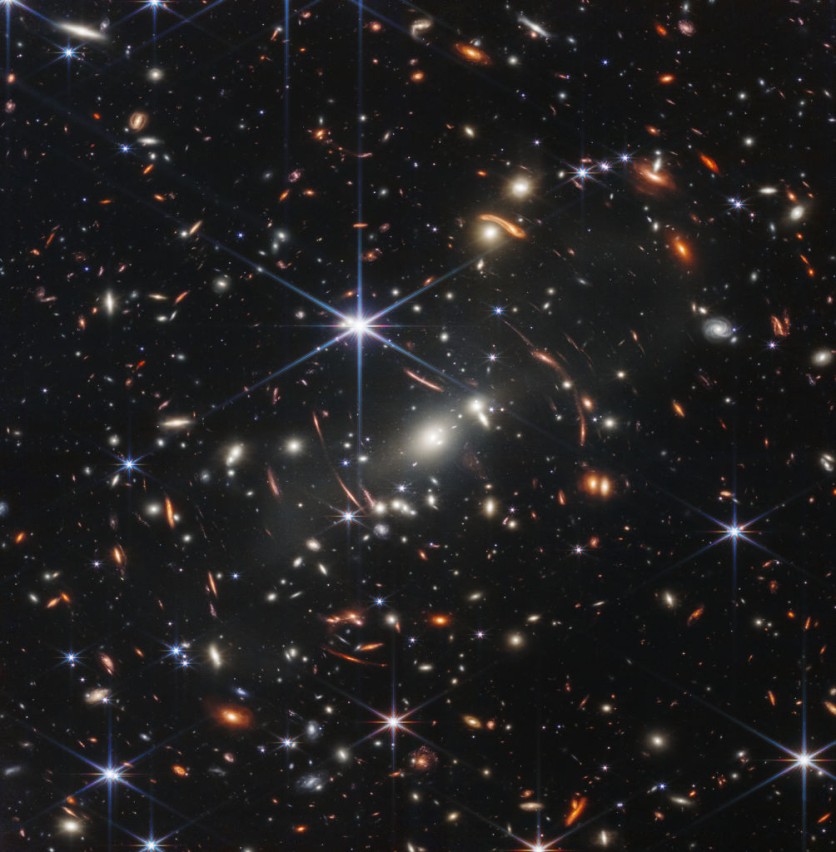In collaboration with the US' Georgia Institute of Technology, researchers from Maynooth University in Ireland have unveiled a new computer simulation that mirrors early universe conditions, reconciling it with observations made by the James Webb Space Telescope (JWST).
Phys.org reported that initial data from Webb suggested potential discrepancies in our comprehension of early galaxy formation, with the first scrutinized galaxies appearing brighter and more massive than anticipated.
Renaissance Simulations
The study employed advanced "Renaissance simulations," delving into the intricacies of early universe galaxy formation. These simulations can discern minuscule dark matter clusters, tracing their amalgamation into dark matter halos that eventually serve as hosts for observable galaxies.
Moreover, the simulations can replicate the birth of the very first stars, known as Population III stars, expected to be significantly larger and brighter than contemporary stars.

The findings asserted the unison of these simulated galaxies with the established models underpinning cosmological simulations. Lead author Joe M. McCaffrey, a PhD student at Maynooth's Department of Theoretical Physics, emphasized the pivotal role of these simulations in unraveling our cosmic origins.
He expressed future aspirations to employ similar simulations to probe the growth of massive black holes in the early universe. Dr. John Regan, Associate Professor at Maynooth's Department of Theoretical Physics, lauded the James Webb Space Telescope for its transformative role in comprehending the nascent universe.
He highlighted how the telescope grants a glimpse into the universe's state just a few hundred million years post-Big Bang, an era when the universe was less than 1% of its present age.
Regan noted the wealth of information JWST provides, showcasing a young universe teeming with star formation and a burgeoning population of massive black holes.
He emphasized that the next phase of the research will involve leveraging these observations to refine theoretical models, a feat that was, until recently, beyond reach.
Read Also : NASA James Webb Space Telescope Discovers Rare Element in Massive Cosmic Explosion From Star Merger
High Stellar Masses
The study delves into recent JWST observations, spotlighting galaxies from the early universe through JADES and CEERS surveys. These galaxies have been identified with notably high stellar masses and substantial rates of star formation, prompting questions about their alignment with the ΛCDM model.
Prior investigations compared JWST observations with large-scale cosmological simulations, which, while successful to a degree, were limited by insufficient mass and spatial resolution in capturing the early galaxy assembly process.
Enter the Renaissance simulations, characterized by their heightened resolution and tailored to model early universe galaxy formation. They demonstrated that the most massive galaxies in the Renaissance exhibited stellar masses and star formation rates in harmony with JADES and CEERS observations.
According to the study, this galaxy formation paradigm, in conjunction with forward extrapolation of stellar masses, presented a seamless integration with JWST data, dispelling any tensions with the ΛCDM model. The research team's findings were published in The Open Journal of Astrophysics.
Related Article : NASA's James Webb Discovers New, Never-Before-Seen Feature in Jupiter's Atmosphere-What Is It?

ⓒ 2025 TECHTIMES.com All rights reserved. Do not reproduce without permission.




